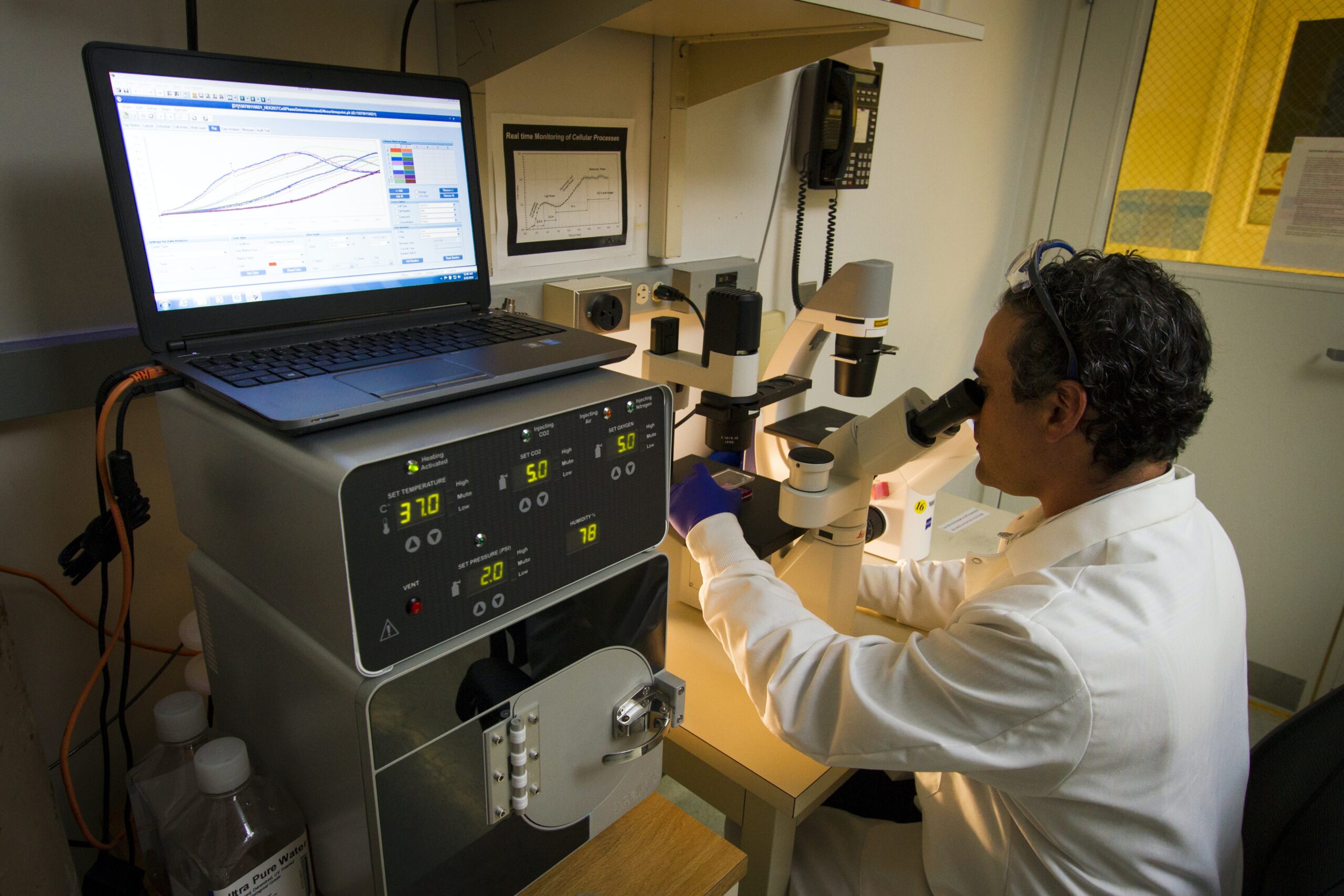Have you ever wondered what a prostate-specific antigen (PSA) test is and why it's important? In this article, we will explore the purpose and significance of the PSA test. As men, our prostate health is crucial and understanding the PSA test can help detect potential prostate issues at an early stage. So, let's dive in and gain a better understanding of this important medical test.

Understanding the Prostate-specific Antigen (PSA)
The nature of prostate-specific antigen
The prostate-specific antigen (PSA) is a protein produced by the cells of the prostate gland. It is primarily present in the semen, but a small amount of PSA can also be found in the blood. PSA plays a crucial role in the functioning of the male reproductive system.
The role of prostate-specific antigen in the human body
PSA serves as a biomarker for various conditions and diseases affecting the prostate. Its primary function is to liquefy semen, allowing sperm to swim freely. However, the presence of abnormal levels of PSA in the blood can indicate the presence of prostate issues, including prostate cancer.
The Role of PSA Test in Prostate Health
Detecting prostate cancer
One of the most significant contributions of PSA testing is its role in the early detection of prostate cancer. Prostate cancer is the second most common cancer in men, and early detection is crucial for successful treatment. By measuring the levels of PSA in the blood, doctors can assess the risk of prostate cancer and determine the need for further diagnostic tests.
Monitoring prostate health
In addition to detecting prostate cancer, PSA testing is also used to monitor the health of the prostate gland. Regular PSA tests can track any significant changes in PSA levels over time, which may be indicative of prostate conditions such as prostatitis or benign prostatic hyperplasia (BPH). Monitoring PSA levels can help identify potential problems and guide appropriate medical interventions.
The PSA Test Procedure
The pre-test preparation
Before undergoing a PSA test, it is essential to follow the pre-test preparations recommended by your healthcare provider. This may include avoiding factors that can affect PSA levels, such as ejaculation, vigorous exercise, and certain medications. It is crucial to communicate any relevant medical history or ongoing treatments to your doctor to ensure accurate interpretation of the test results.
The actual testing procedure
The PSA test involves a simple blood draw, typically performed in a laboratory or healthcare facility. A healthcare professional will draw a small sample of blood from a vein in your arm using a needle. The blood sample will then be sent to a laboratory for analysis.
Post-test procedures
After the PSA test, your doctor will discuss the results with you. Depending on the results, further diagnostic tests or follow-up appointments may be recommended. Your doctor will interpret the PSA levels and consider other factors, such as your age, medical history, and symptoms, to determine the most appropriate course of action.
Interpreting PSA Test Results
Understanding PSA levels
PSA levels are measured in nanograms per milliliter (ng/mL). It is essential to understand the significance of different PSA levels to interpret the test results accurately. Generally, higher PSA levels indicate a higher likelihood of prostate issues, including prostate cancer. However, it is essential to consider various factors that can influence PSA levels, such as age and prostate size, to obtain a comprehensive understanding.
What constitutes a normal PSA level?
There is no specific threshold for normal PSA levels. However, in general, a PSA level below 4.0 ng/mL is considered normal for most men. Age, race, and prostate size may influence what is considered a normal PSA level for an individual. It is important to note that the interpretation of results should be done in consultation with a healthcare professional who can consider various factors specific to you.
The implications of high PSA levels
High PSA levels can be indicative of several conditions, including prostate cancer, prostatitis, or BPH. While elevated PSA levels do not necessarily mean a person has cancer, they can indicate a higher risk of developing prostate cancer. In such cases, further diagnostic tests, such as a prostate biopsy, may be recommended to accurately determine the underlying cause.

Understanding the Free and Total PSA Test
The difference between Free and Total PSA
The total PSA test measures the overall amount of PSA circulating in the blood, including both free PSA and PSA bound to other proteins. On the other hand, the free PSA test specifically measures the PSA that is not bound to other proteins. The ratio of free PSA to total PSA can provide additional information about the likelihood of prostate cancer.
The significance of Free PSA levels
A lower ratio of free PSA to total PSA may indicate a higher risk of prostate cancer. However, it is important to note that this is not definitive proof of cancer, and further diagnostic tests may still be needed. Free PSA levels can help to distinguish between benign conditions and prostate cancer, aiding in decision-making regarding further investigations or interventions.
The implications of Total PSA levels
Total PSA levels, along with other factors such as age, can provide valuable information about prostate health. Higher total PSA levels may indicate a higher probability of prostate issues, including cancer. However, PSA levels alone cannot definitively diagnose prostate cancer, and additional testing is often necessary to confirm the presence of cancer cells.
Risk Factors Affecting PSA Levels
The impact of age on PSA levels
PSA levels tend to increase with age due to the natural aging process of the prostate gland. It is important to consider age-specific reference ranges when interpreting PSA results. Older men may have slightly higher PSA levels without necessarily having prostate cancer. Regular PSA testing and monitoring can help establish a baseline and track any significant changes over time.
Effects of lifestyle factors on PSA levels
Certain lifestyle factors, such as obesity and smoking, can influence PSA levels. Obesity has been linked to higher PSA levels, while smoking may lead to lower PSA levels. It is crucial to maintain a healthy lifestyle, including regular exercise and a balanced diet, to promote overall prostate health and obtain more accurate PSA measurements.
The influence of genetics on PSA levels
Genetic factors can also contribute to variations in PSA levels. Some individuals may have naturally higher or lower PSA levels due to genetic predispositions. Family history of prostate cancer can also influence PSA levels. If you have a family history of prostate cancer, it is essential to discuss this with your doctor to determine the appropriate frequency of PSA testing and any potential additional screenings.

The Relationship between PSA Levels and Prostate Cancer
The role of PSA in identifying prostate cancer risk
PSA testing plays a crucial role in identifying individuals at risk for prostate cancer. Elevated PSA levels can prompt further investigations, such as imaging tests or prostate biopsies, to determine if cancer is present. Regular monitoring of PSA levels and changes over time can help detect prostate cancer at an early stage when treatment is often more effective.
How prostate cancer affects PSA levels
Prostate cancer cells can produce more PSA than healthy prostate cells. As a result, individuals with prostate cancer may have elevated PSA levels. However, not all cases of elevated PSA levels indicate the presence of prostate cancer. Other prostate conditions, such as prostatitis or BPH, can also cause PSA levels to rise.
PSA levels in early and advanced stages of prostate cancer
In the early stages of prostate cancer, the PSA levels may be slightly elevated or within the normal range. However, as the cancer progresses or becomes more aggressive, the PSA levels tend to rise significantly. Regular monitoring of PSA levels, combined with other diagnostic tests, can aid in the early detection of prostate cancer and guide the appropriate treatment options.
Risks and Limitations of PSA Testing
The risks of false positives and negatives
PSA testing is not a definitive diagnostic tool for prostate cancer. It can result in both false positives and false negatives. A false positive occurs when PSA levels are elevated, but no cancer is present. This may lead to unnecessary diagnostic tests and anxiety. On the other hand, a false negative occurs when PSA levels are within the normal range, but cancer is present. Therefore, additional testing may be necessary even with normal PSA levels.
Understanding the limitations of PSA testing
PSA testing has several limitations that must be considered. It cannot differentiate between aggressive and non-aggressive prostate cancers or determine the exact location of cancer within the prostate. Additionally, other factors can influence PSA levels, such as infection, inflammation, recent ejaculation, or certain medications. Therefore, PSA testing should be used in conjunction with other diagnostic tools to obtain a more comprehensive assessment of prostate health.
PSA testing controversy
Over the years, there has been significant debate and controversy surrounding the use of PSA testing for prostate cancer screening. Critics argue that its limitations, such as the risk of overdiagnosis and overtreatment, may outweigh its benefits. However, many healthcare professionals still recognize the importance of PSA testing when used judiciously and in conjunction with other diagnostic tools.
Deciding to Get a PSA Test
When to consider a PSA test
The decision to undergo a PSA test should be made after considering various factors, including age, family history of prostate cancer, and individual risk factors. It is generally recommended to discuss PSA testing with your doctor around the age of 50, although earlier testing may be warranted for those at higher risk. Ultimately, the decision should be based on a shared decision-making process between the individual and their healthcare provider.
Discussing with your doctor about PSA testing
When considering a PSA test, it is important to have an open and honest discussion with your doctor. They can provide you with information about the benefits and limitations of PSA testing, as well as any potential risks or controversies. Your doctor can also help assess your individual risk factors and guide you in making an informed decision regarding the need for PSA testing.
Importance of informed decision making
Making an informed decision about PSA testing is crucial for prostate health. Understanding the implications, risks, and limitations of the test can help individuals weigh the potential benefits and determine the most appropriate course of action. By actively participating in the decision-making process, individuals can have greater control over their prostate health.
Living with High PSA Levels
Managing anxiety about high PSA levels
Receiving news of high PSA levels can be anxiety-inducing. It is important to remember that increased PSA levels do not necessarily mean cancer. Reach out to your healthcare provider for assistance in understanding the results and discussing the next steps. They can provide guidance, support, and further testing options to accurately determine the cause of elevated PSA levels.
Monitoring and follow-up tests for high PSA levels
If you have high PSA levels, your doctor may recommend additional diagnostic tests, such as a prostate biopsy, to further evaluate the situation. It is essential to closely monitor PSA levels over time to assess any changes and evaluate the effectiveness of any interventions or treatment plans. Regular follow-up tests can help track the progression of prostate health and ensure proactive management.
Lifestyle changes for individuals with high PSA levels
In some cases, lifestyle changes may be recommended for individuals with high PSA levels. Adopting a healthy lifestyle, including regular exercise, maintaining a healthy weight, and consuming a balanced diet, can promote overall prostate health. It is crucial to collaborate with your healthcare provider to determine the most effective lifestyle modifications that suit your individual situation.
In conclusion, understanding the prostate-specific antigen (PSA) and the role it plays in prostate health is vital for individuals, especially men. PSA testing can aid in the early detection of prostate cancer and monitoring prostate health. However, it is essential to interpret PSA test results in conjunction with other factors and healthcare professional guidance. Decisions regarding PSA testing should be based on informed decision making, considering individual risk factors and discussions with a doctor. By actively managing and monitoring PSA levels, individuals can take control of their prostate health and make necessary lifestyle adjustments if needed.

